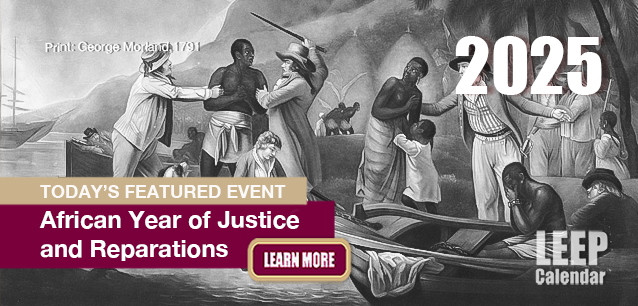 AD
AD
Today is: December 30
Scroll to explore events active on this date.
LEEP INK FEATURES

August? Absolutely!
In August, we live through the Dog Days of Summer. It's hot and often humid, and those who can leave for better climates do. Down south, winter is in full force. August is also known as "the ...

In The Heat of July: July 2025 Events
Is it hot enough (or cold enough if you're below the equator) for you yet? There is actually a day for that! Like every month, I pick a diverse collection of events you may or may not know about. This ...

May Blooms: Events in May 2025
Along with October, May is one of the most densely packed months of the year. It's before the summer humidity and the last whole month of the school year. The weather is warming in t...
About Confederate Heritage Month
Culture & Art , Politics
United States
Ends: Apr 30, 2024
DESCRIPTION:
Created in 2006, Confederate History Month is declared by the state government or governor each year in Alabama, Florida, Georgia, Louisiana, Mississippi, Texas, and Virginia.
The Confederacy, or Confederate States of America, existed between 1861 and 1865. It consisted of South Carolina, Mississippi, Florida, Alabama, Georgia, Louisiana and Texas, Virginia, Arkansas, North Carolina, and Tennessee, joined with the declaration of war.
By the 1850s, the southern states had grown tired of northern influence, achieved primarily due to its impact on culture and its concentration in industry and finance. The Confederacy was largely agriculturally based, with limited industry, and financially poor by comparison.
The southern states voted to leave the United States and create their own country. One of the issues prompting this was the use of cradle-to-grave slavery constituting its primary workforce. Enslaved people were not considered human; they were property and represented a significant portion of the wealth held in the south. With the election of Republican Abraham Lincoln, the Union (northern states) took a stance to end the spread of slavery—but not stop it. To the agrarian south, this was unacceptable. It depended upon slave labor to harvest its crops, meaning its entire economic system and the personal wealth of the landowners would implode.
A common misconception is that the US Civil War was fought to free slaves. Slavery was one of several issues to the Confederacy, and ending slavery was a favorable outcome of the war but not the spark. Rather, it was a test of the Constitution, specifically state rights versus federal rights. The Confederacy believed they had the right to determine how they lived and by which rules without interference from the federal government. When the Union refused to allow the Confederacy to cede, it overrode state rights to maintain the continuity of the United States.
At the founding of the United States in 1776, the national government was created to be less powerful than the state governments, with a few exceptions: dealing with foreign nations, national defense, and facilitating interstate commerce. All other issues were to be handled on a state level. According to the US Constitution, the states had a right to withdraw from the union, and by preventing that, the Confederacy argued the federal government usurped its state rights.
Due to the 400-year legacy of slavery (ending in 1865) and state-supported racial segregation (ending in 1964), Confederate Heritage Month is highly contentious and seen as a celebration of racism by many critics. Detractors insist Confederate Heritage Month plays into existing racism and celebrates white supremacy and slavery.
Proponents of Confederate Heritage Month insist that the Confederacy played a significant role in shaping the United States, and the ramifications of its actions and contributions continue today. They argue that to deny a portion of our past, good and bad, is selective censorship.
Whether you side with the detractors or the proponents, the best way to acknowledge this month is to read the United States Constitution and learn both sides of the history. A great place to start is with Howard Zinn's "Peoples' History of the United States."
The disagreements between many of the former Confederate states and the rest of the United States continue today. Once again, states' rights are at the center, with extremists calling for another civil war on both sides.
In the twenty-first century, highly authoritarian approaches to social issues wrapped in xenophobic scare tactics and dispensationalist religious nationalism, often informed by racism, have replaced slavery and the practice of owning people as property on the former Confederacy side.
However, intolerance and fanaticism are not one-sided.
Extreme social engineering, alterations to science to match current biases, a patent disrespect for religious views, and ignoring individual safety—particularly a woman's right to feel secure in same-sex spaces lead. The movement continues to attack culture, rewriting multiple languages, books, and films and displaying complete disrespect for personal values that do not embrace theirs. These are the ideas of the extremists of today's Union side.
Ultimately, both sides attempt to rewrite history, censor books and control the narrative. Both sides are equally zealous and self-righteous in trolling, lashing out, shaming, and threatening.
Meanwhile, the rest of America, the seventy percent that isn't extremist, is being batted back and forth in this latest iteration of the United States, trying to navigate these extremes and get on with life.
VIDEOS
Currently, this event does not have supporting videos.
SUPPORTING DOCUMENTS
Currently, this event does not have supporting documents.
ADDITIONAL IMAGES
Currently, this event does not have supporting images.
Where would you like to go now?
 AD
AD

























































/footer-logo.svg)
